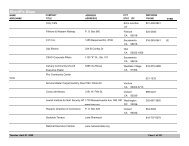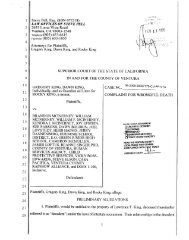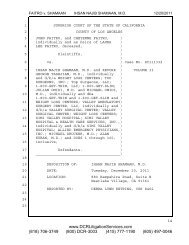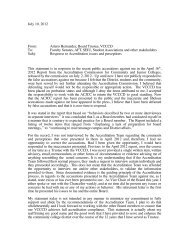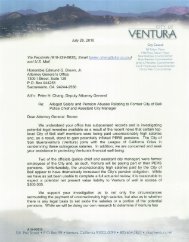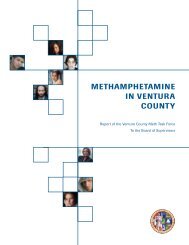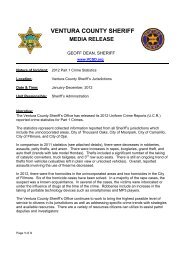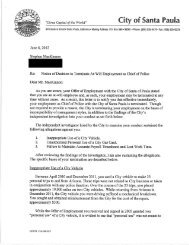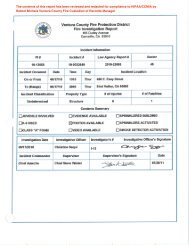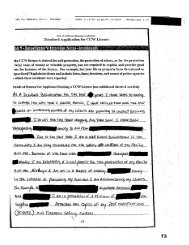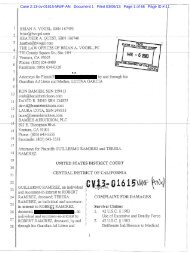Metrolink peer review report - Ventura County Star
Metrolink peer review report - Ventura County Star
Metrolink peer review report - Ventura County Star
Create successful ePaper yourself
Turn your PDF publications into a flip-book with our unique Google optimized e-Paper software.
METROLINK COMMUTER RAIL SAFETY PEER REVIEW PANEL<br />
Final Report – January 5, 2009<br />
Issue Paper #6: Analysis of <strong>Metrolink</strong> Short Term Safety Projects<br />
Issue Papers<br />
The SCRRA ad hoc subcommittee asked that the Panel <strong>review</strong> the following short-term safety projects that were<br />
being considered by the SCRRA Board. The Panel has <strong>review</strong>ed and recommended actions for each of the<br />
following issues:<br />
a. In-cab video recording<br />
b. ATS/PTC<br />
c. Second set of eyes<br />
d. DigiCon Dispatch Issue<br />
e. Annual Health and Psychiatric Evaluations<br />
f. Railroad Industry Hours of Service/Split Shift Issue<br />
a. In-Cab Video Surveillance<br />
Observations<br />
Whether the Panel recommends or discourages in-cab video cameras depends on the specific reason for installing<br />
them and SCRRA’s ability to resolve successfully the practical, legal and cultural issues that the cameras present.<br />
Recommendations<br />
a. Investigate, specify, procure, and install video monitoring system technology in the operating cabs of<br />
SCRRA Passenger Rail Equipment. The Federal Aviation Administration has performed research in this<br />
area and their findings, technology and protocols should be <strong>review</strong>ed as part of this process.<br />
b. Technology should include a software application for facilitating the analysis of video observations and<br />
provide for real time observations.<br />
Background<br />
The following are the various existing video surveillance applications and available technologies:<br />
• Real-time Monitoring of the Engineer’s Well-being, Alertness, and the Absence of Distractions. Aided by<br />
“smart technology” that analyzes streaming video for specific concerns (such as cell-phone use, extra people in<br />
the cab, and eye-closures/fatigue), one could monitor multiple trains in real-time from the dispatch center.<br />
Adding a camera to focus outside the locomotive, this setup could also provide a distraction-free second set of<br />
eyes.<br />
• Monitoring Fatigue. The trucking industry uses special video cameras to monitor driver fatigue by measuring<br />
the frequency and duration of eye-blinks.<br />
• Incident Investigation. Focusing inside and outside the cab, video cameras could be used to record activity<br />
outside the train for a specified amount of time before, during, and after an event is triggered (e.g., hard break<br />
application, accident, or a crossing violation). This application would not require real-time monitoring: tapes<br />
could be stored and <strong>review</strong>ed by investigative teams.<br />
49



